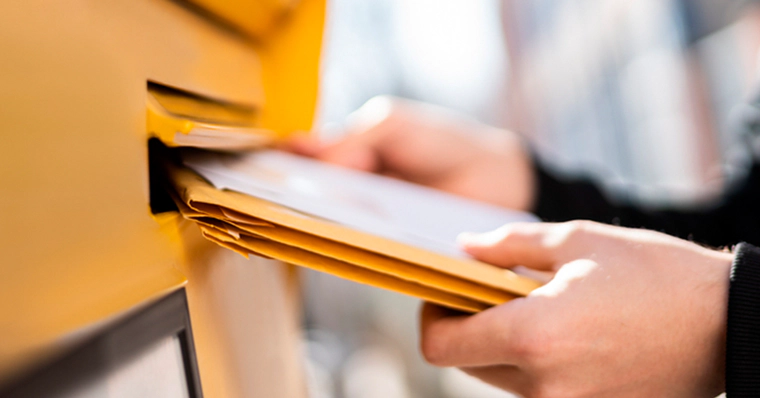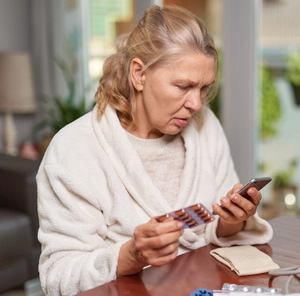Prescription Drug Take Back Days are Successful. Is Mail-In Take Back the Next Logical Step?
A study found that leftover opioid medications were properly disposed of by 60% of study participants who had received a mail-in disposal kit, compared to just 43% of the study participants who had not received such a kit. Is a mail-in approach the next evolution of Prescription Drug Take Back?

Each year, more Americans participate in the Drug Enforcement Administration’s Prescription Drug Take Back Day. An effective program, this biannual event gives residents a convenient way to discreetly dispose of unused pharmaceutical drugs and medications that are often left lying around the home, posing a risk to young children and individuals who may seek them out for recreational purposes.
Now, some organizations in the U.S., in conjunction with a broader research effort led by the University of Pennsylvania, are examining a mail-in program designed to complement the biannual take back event. According to the preliminary findings, a mail-in option would immensely benefit Americans.
Prescription Drug Take Back Day is Effective. Is a Mail-In Option Next?
A clear and present danger goes along with keeping leftover, unused medication in the home, particularly leftover opioid medication. Such meds may be misused by the person they were prescribed for; they may be consumed by young children who think the pills are candy, or others may use them for experimental purposes. Disposing of the meds in the trash still poses a risk that animals or humans may find the pills, and flushing the meds carries an environmental concern.
To reduce harm to the environment, people, and animals and still get pills out of homes, the Drug Enforcement Administration launched a biannual program in 2010 called Prescription Drug Take Back Day. Collaborating with pharmacies and medical offices nationwide, the DEA organizes the safe disposal of anywhere from 650,000 to 750,000 pounds of prescription drugs every April and October.1
The DEA’s program is quite successful, but what if every American patient who received a prescription for opioid painkillers also received a mail-in envelope they could use to dispose of any unused opioids that might be leftover after that patient recovered from their surgery, illness, operation, injury, or procedure? What if such a model was replicated in every hospital, doctor’s office, and dental clinic nationwide? Would thousands of Americans potentially be saved from prescription drug addiction?
Mail-In Success, What the Research Shows
Researchers at the University of Pennsylvania sought to answer this question: “Could giving surgery patients ready-to-use mailed disposal kits for unused opioids lower the risk of abuse of the drugs?” According to the findings, patients who received mailed disposal kits that they could then mail back with their unused meds were much more likely to dispose of their unused meds than patients who did not receive such kits.2

The researchers studied 235 patients prescribed opioid painkillers for orthopedic (bone and muscle system) or urologic (urinary system) procedures. The researchers separated the patients into two groups, and the usual procedure was followed for about half of the patients. They were texted instructions to dispose of their unused pills along with a link to locations of local safe disposal sites (mostly pharmacies).
The other patients received the same text message as the first group but were also mailed disposal kits four to seven days after their procedures. According to the findings, leftover opioid medications were properly disposed of by 60% of study participants who had received a mail-in disposal kit, compared to just 43% of the study participants who had not received such a kit.
Research has found only about 20% to 30% of U.S. patients who receive opioid medication will ever dispose of unused pills. The study authors concluded that since most patients don’t dispose of unused medications, sending mail-in disposal kits to recovering patients could double or even triple the rate of safe, successful, and stress-free medication disposal.
And the impact could be quite significant, too. For example, from the study, 125 patients using mail-in kits to dispose of medication resulted in the safe disposal of 480 unused opioid pills. Each of those pills could have resulted in a poisoning emergency for a young child or a mind-altering experience for a teen seeking to experiment with opioids.
Getting opioid pills out of homes and into safe disposal is a worthy cause, and it seems mail-in disposal programs can significantly enhance the efficacy of existing disposal programs. The study’s lead author, Dr. Anish Agarwal, spoke to this point. “I was pleased to see that such a simple, ‘snail mail’ approach could change behavior and promote self-reported disposal,” he said. “The opioid epidemic clearly continues to be front and center for patients, and the concerns with opioid use and misuse are becoming a real part of the conversation between physicians and patients. I think patients are more aware of the risks and consequences of using opioids and storing them in their homes.” It’s hoped that counties, cities, and states will implement mail-in programs and improve residents’ safety. 3
California Pilots a Prescription Drug Mail-In Program

“Residents of Sonoma and Mendocino Counties can drop off or mail back their unwanted medications free of charge at locations throughout the region.” That is the opening line of the Safe Medicine Disposal Program’s introduction, a California-based program designed to innovate better solutions for getting potentially addictive, unused medications out of homes and into the disposal. The first of its kind, the California-based organization is laying the groundwork for how such a program could look on a statewide or national scale.4
Quoting the Safe Medicine Disposal Program’s mission statement: “The Safe Medicine Disposal Program is a partnership between local agencies, pharmacies, and law enforcement offices to safely dispose of unwanted medications, prevent overdoses, and protect the environment.” The Safe Medicine Disposal Program is just one program serving a handful of California communities. Still, it is one of the first of its kind operating in the U.S., and it stands as a proof of concept for how other programs could improve public safety by getting potentially dangerous pharmaceuticals out of the community and into safe, monitored, environmentally-friendly disposal.
Prevention is Key, but Treatment is There When Prevention Fails
Prescription drug take back programs and mail-in services are an excellent way to get potentially addictive prescription drugs out of homes and into safe disposal. Such efforts essentially remove a ticking time bomb from homes, as they remove dangerous substances that could cause poisonings, overdoses, addiction, and even death.
While prevention efforts like take back sites and mail-in programs should be utilized, they will not prevent everyone from becoming addicted to prescription drugs. Even when patients use their opioid medication exactly as intended by their doctor, there is still a risk they will become hooked. For those individuals, residential drug and alcohol addiction treatment centers provide the environment, resources, tools, coping strategies, life skills, and educational services to help people get off of drugs and experience life anew.
If you know someone struggling with an addiction to drugs and alcohol, please help them enter a residential treatment program today. Please don’t wait until it is too late for them.
Sources:
-
DEA. “Prescription Drug Take Back Day.” Drug Enforcement Administration, 2023. dea.gov ↩︎
-
JAMA. “Effect of Mailing an At-home Disposal Kit on Unused Opioid Disposal After Surgery.” Journal of the American Medical Association jamanetwork.com ↩︎
-
USNews. “Leftover Opioids After Surgery? Mailed Kits Double Rate of Proper Disposal.” U.S. News, 2022. usnews.com ↩︎
-
SMDP. “Safe Medicine Disposal Program.” Safe Medicine Disposal Program, 2023. safemedicinedisposal.org ↩︎







 ®
®